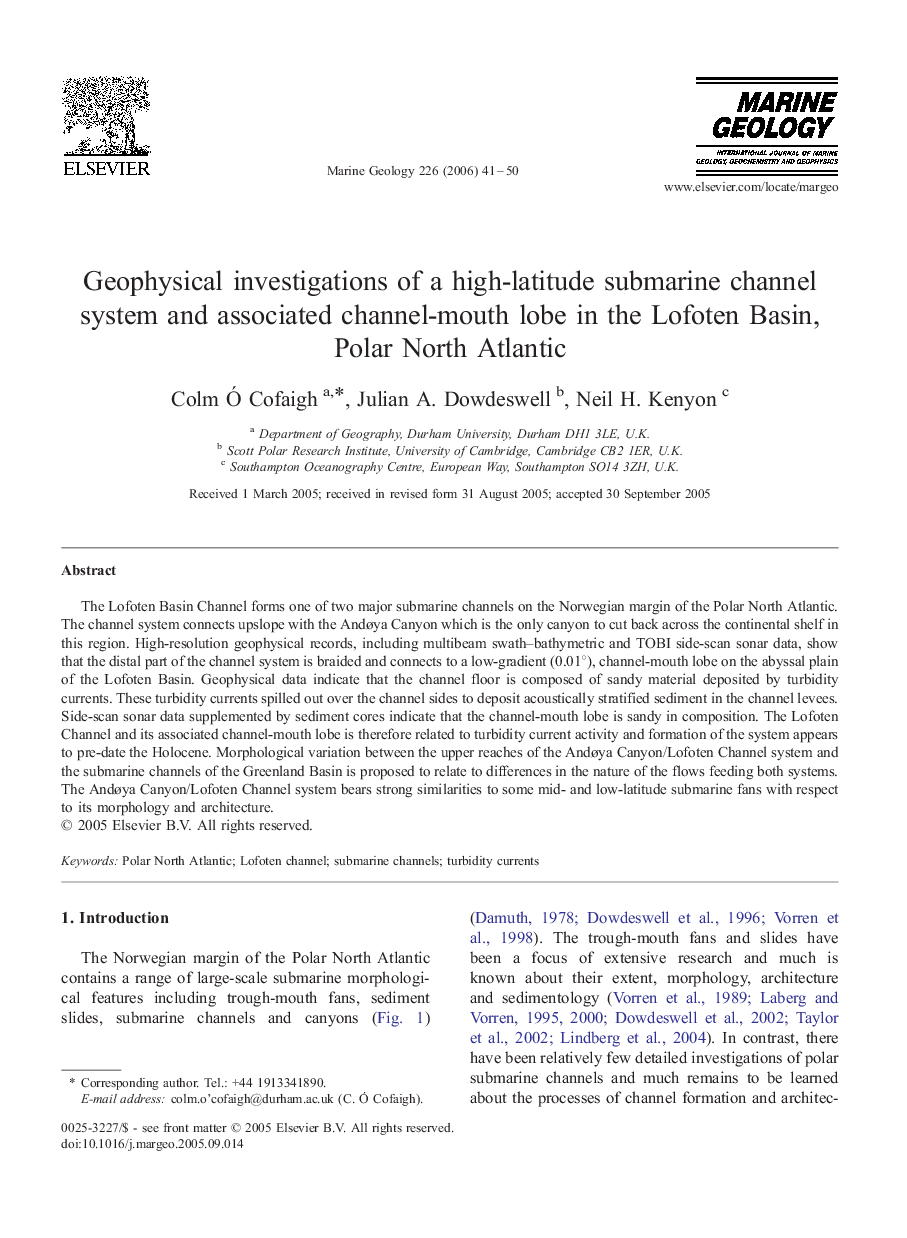| Article ID | Journal | Published Year | Pages | File Type |
|---|---|---|---|---|
| 4719749 | Marine Geology | 2006 | 10 Pages |
The Lofoten Basin Channel forms one of two major submarine channels on the Norwegian margin of the Polar North Atlantic. The channel system connects upslope with the Andøya Canyon which is the only canyon to cut back across the continental shelf in this region. High-resolution geophysical records, including multibeam swath–bathymetric and TOBI side-scan sonar data, show that the distal part of the channel system is braided and connects to a low-gradient (0.01°), channel-mouth lobe on the abyssal plain of the Lofoten Basin. Geophysical data indicate that the channel floor is composed of sandy material deposited by turbidity currents. These turbidity currents spilled out over the channel sides to deposit acoustically stratified sediment in the channel levees. Side-scan sonar data supplemented by sediment cores indicate that the channel-mouth lobe is sandy in composition. The Lofoten Channel and its associated channel-mouth lobe is therefore related to turbidity current activity and formation of the system appears to pre-date the Holocene. Morphological variation between the upper reaches of the Andøya Canyon/Lofoten Channel system and the submarine channels of the Greenland Basin is proposed to relate to differences in the nature of the flows feeding both systems. The Andøya Canyon/Lofoten Channel system bears strong similarities to some mid- and low-latitude submarine fans with respect to its morphology and architecture.
